History of Bauhaus style development
Eternal Bauhaus There was a Bauhaus Higher School of Construction and Artistic Design in Weimar, Germany, from 1919 to 1933, and afterward in Dessau. Its teachers and students advocated for new ways to create, while architect Walter Gropius offered a new architectural orientation. Bauhaus interior design has become one of the school’s developments, along with other disciplines of design ranging from architecture to furniture and apparel.
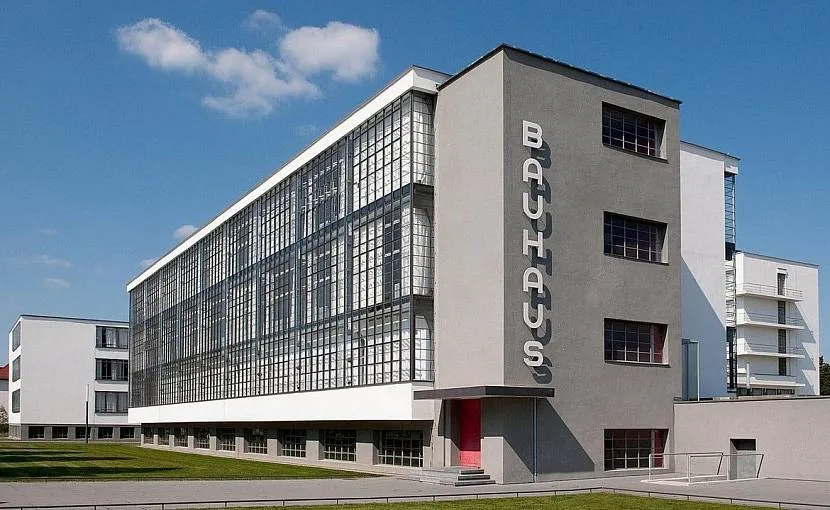
The best Bauhaus style has characteristics of minimalism and late modernism. However, unlike popular minimalism, the Bauhaus emphasizes full utility. And, in comparison to the current, the German style is more reasonable; it has less aestheticism. The world has been simplified. The idea of style involves convenience and pragmatism, utility in everyday life, and, most importantly, accessibility from every feature of the interior and from every item of furniture.
The rapid expansion of industry, combined with German pedantry, could only lead to success. Architects were able to improve the design and architectural techniques, as well as make industrial goods more convenient, elegant, and affordable.
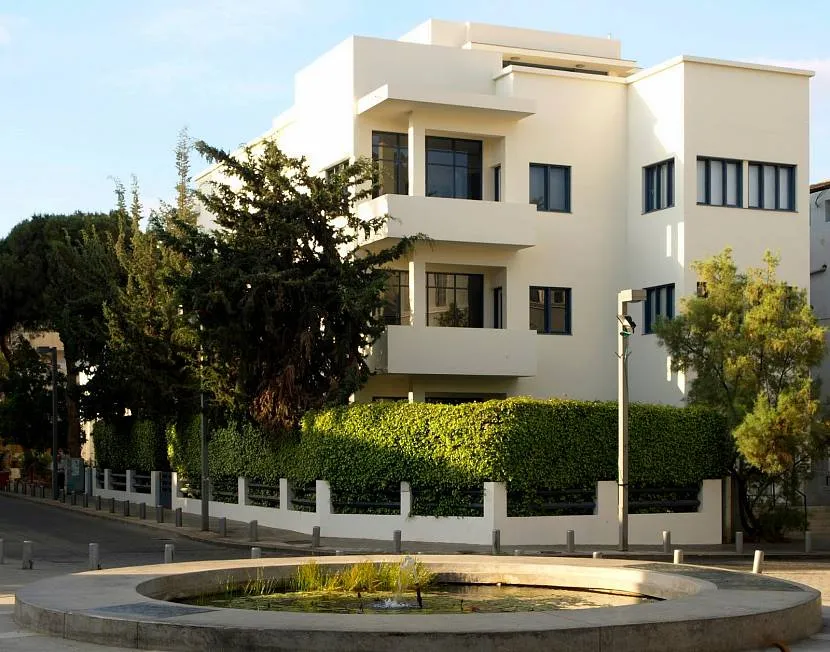
The style began to emerge fast in Palestine in the 1930s, where Jewish architects wisely emigrated. There are still city blocks in Tel Aviv designed according to the canons of the style; they are on the UNESCO World Heritage List. German architects also visited the USSR, and their designs were used to build quarters in Sverdlovsk, Solikamsk, and Perm.
The Bauhaus school existed for 14 years, but its impact can still be seen today. Its innovations are still employed in industrial design and modern architecture. Its impact can be seen in Scandinavian interior design, and the Bauhaus aesthetic can be found in IKEA and Apple products. The pioneers of the international style clearly demonstrated the path to success: to attain perfection and get rid of everything superfluous, leaving only the essence of things.
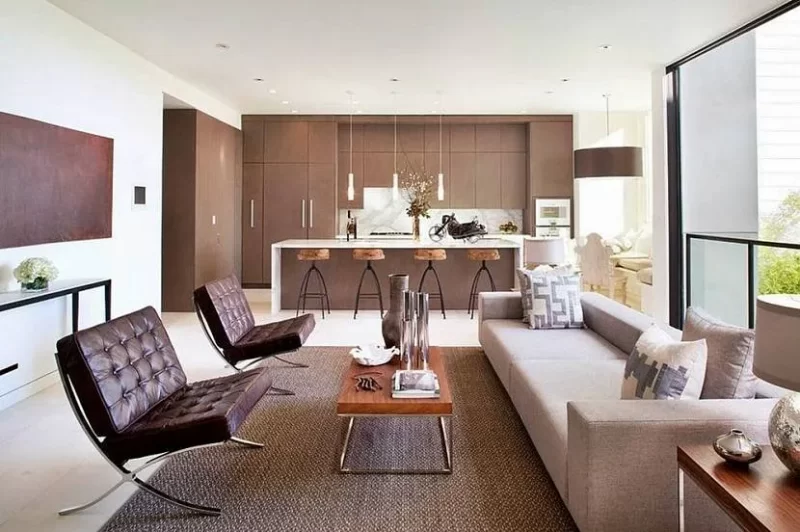
Distinctive features of the style
The best Bauhaus style will appeal to those who prefer this space to be subjected to logic and calculation. There are no unnecessary artifacts, unusual color solutions, or magnificent decorative components in the room, which is furnished according to style canons. The following design elements stand out:
- The design is emphatically straightforward, with the practical use of space that tends to common forms.
Space zoning is one of my favorite methods. - The inside of a German-style residence is always designed for the unique inhabitants; the fundamental criterion is optimum comfort.

- The geometricity of space is distinctive — smooth surfaces, straight lines, and distinct shapes — yet there is no overarching symmetry typical of the classics.
- Squares and rectangles are the most popular shapes.
Ceilings of varying heights are now uncommon, yet they were formerly quite fashionable (for different rooms). - A minimum of decoration, albeit this norm, has been largely departed from in recent years. The style is inspired by the industrial beauty of home appliances.
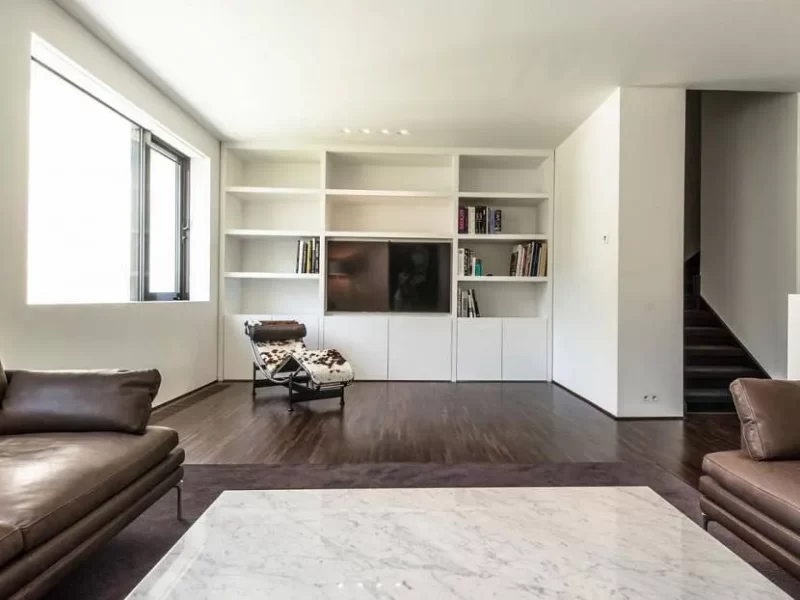
Color, lighting, materials
The Bauhaus is known for its monochrome, non—non-irritating color scheme. The base color palette consists of white, black, beige, and gray. Bright shades of green, red, and yellow are used for selective accentuation, with the purity of the color reminiscent of the plastic popular in the 1930s. A painting, a collection of pillows on the sofa, a chair, or a kitchen apron can all serve as accents.
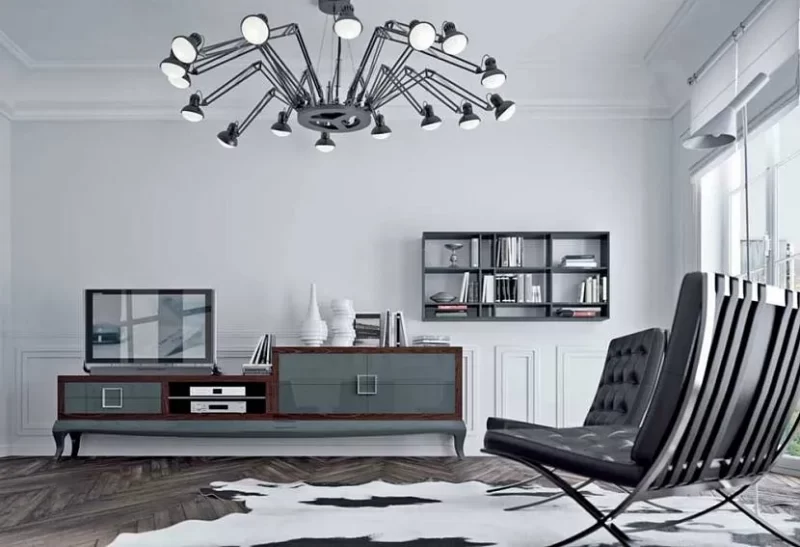
The German interior is described as light. Large windows handle the role of lighting during the day. Lights, chandeliers, and spotlights are linked in the nighttime. Because the area is separated into zones, the lighting is similarly zoned, particularly in the living room and kitchen. In addition to basic illumination,
local and decorative lighting is given in the rooms, highlighting not just distinct zones, but also objects. Metal lighting components with a simple geometric design are used. The central chandelier, floor lamp, and wall sconces may be decorated with glass or plastic.
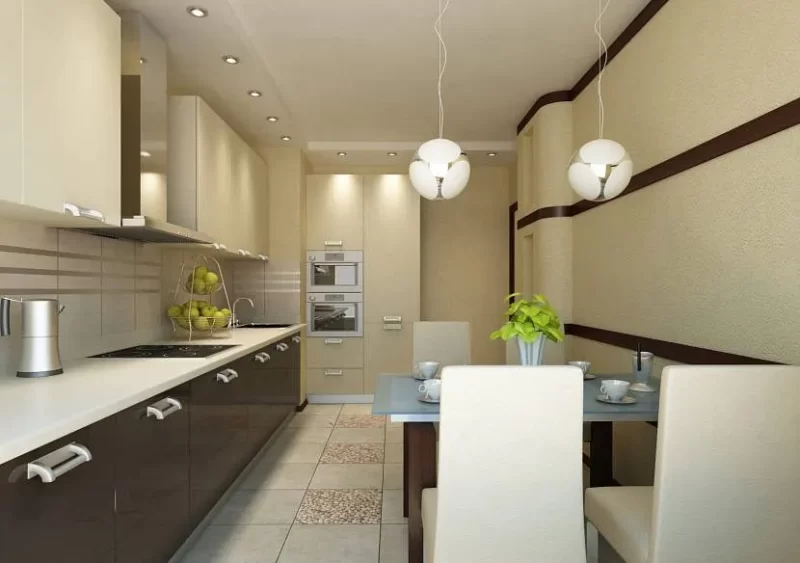
The Bauhaus decor does not shy away from using natural and technical materials of diverse textures and price ranges. Wood, metal, glass, and plastic are preferred (and other artificial materials). Leather is frequently used in furniture ornamentation, although natural stone and brick are uncommon.
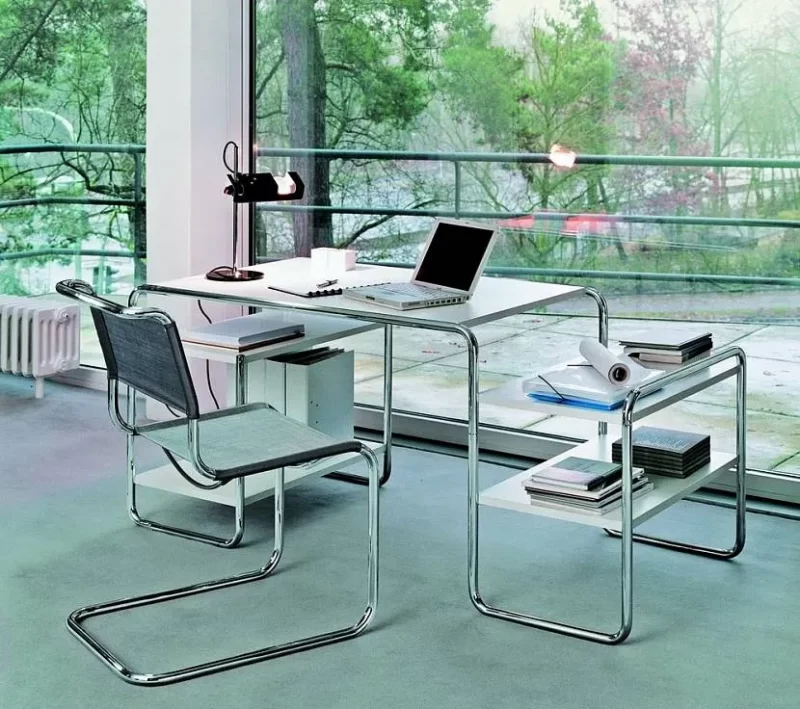
Walls, floor, ceiling
The German style, based on practicality and accessibility principles, is one of the simplest to adopt in modern conditions; the essential materials can be purchased in any network construction market. The Bauhaus canons provide the following pre-packaged solutions:
- High—quality linoleum in neutral tones is the chosen floor covering. You can replace it with a laminate that looks like a wooden or metal surface; a light parquet board is also an option.
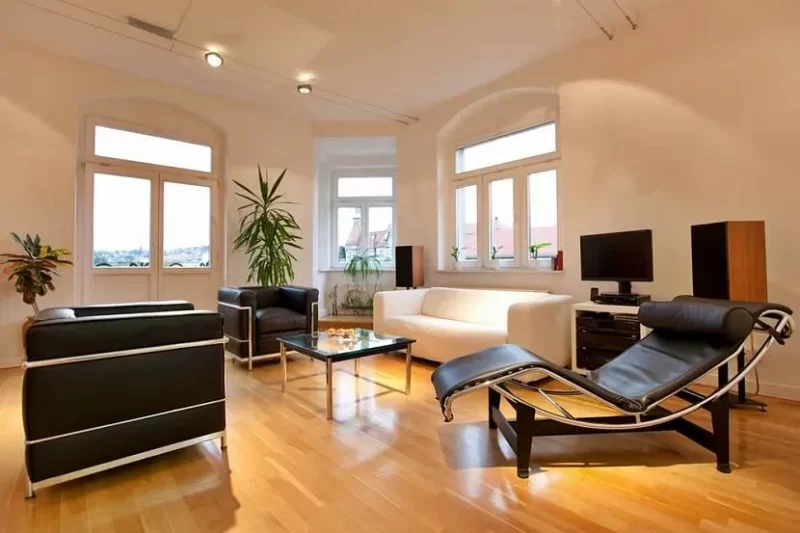
For walls and ceilings, light plaster is ideal. You can paint or expand the ceiling, and choose light wallpaper with a geometric pattern for the walls.
Floral designs and bright colors will be improper and will detract from the image.

Furniture for the best Bauhaus style: 6 principles of selection
Pieces of furniture are selected in the interior under the slogan: reliable, functional, affordable. It is forbidden to overload the space with furniture; furnishing is carried out according to the following principles:
- Rational use of space. The items are placed as conveniently as possible. In combined rooms, decorative partitions are abandoned in favor of functional ones. For example, the living room and the kitchen are separated by a bar with glossy facades and minimalistic decor.

- Bulky pieces of furniture. Important selection criteria are simple form, quality, and minimum decor. Compactness is appreciated, which helps to organize the space competently. Therefore, the solution in the best traditions of the Bauhaus will be a built-in wardrobe, and not only a wardrobe but also an open one. The wardrobe, now popular, is the brainchild of the Bauhaus School of Design.

The kitchen receives special care. Cabinets have flat monotone surfaces and always have their shelves closed. Metal, acrylic, and polished concrete are common tabletop materials; wood is less practical and hence used less frequently. Metal frames and leather seats make very stylish chairs.

- A business card in the German style is furniture on a metal frame. Сhrome furniture, which first appeared a century ago, has remained popular to this day. The metal frame optically lightens the device, which is very useful in a compact space. The legendary Barcelona chair without armrests is proof that laconic seats and armchairs will decorate the living room perpetually.

Glass and plastic. These materials are used to make coffee and dining tables. The counters are frequently spherical in shape, which adds a nice touch of variety to the interior.
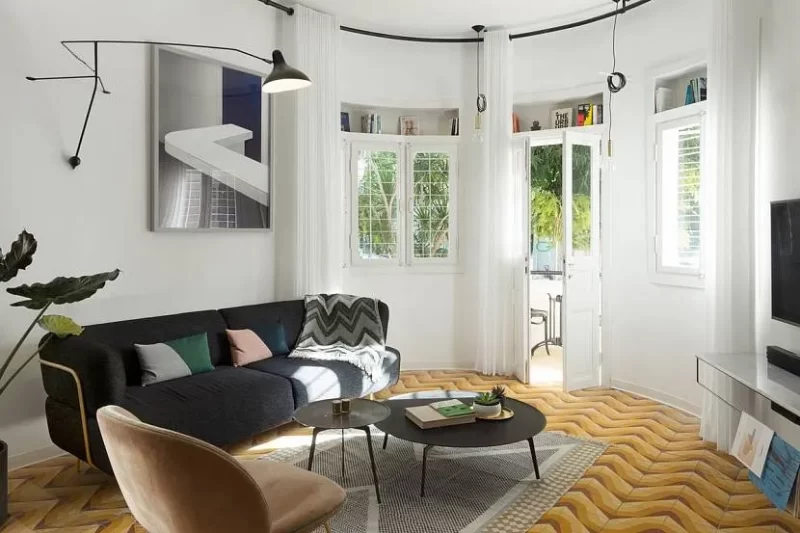
Transformers. A functional wardrobe on roller wheels, suitable for leased apartments, once made a splash. Nowadays, a group of enormous tables that fold one under the other, or a sliding coffee table, will suffice.

Eternal Bauhaus: decor and object
Competent, brilliant lighting is more than just a decorative element in any Bauhaus interior. The more light there is, the larger the space becomes. Accents are put in, and the light highlights the important regions.
The lamps were supposed to be used to beautify the room. Their design incorporated simple shapes and unique duets. The most well-known example is the use of chrome—plated metal and frosted glass in the iconic table lamp designed by William Wagenfeld and Carl Jacob Eucker.
Marianne Brandt’s lamp is no less famous – a little metal model with a design similar to modern variants.
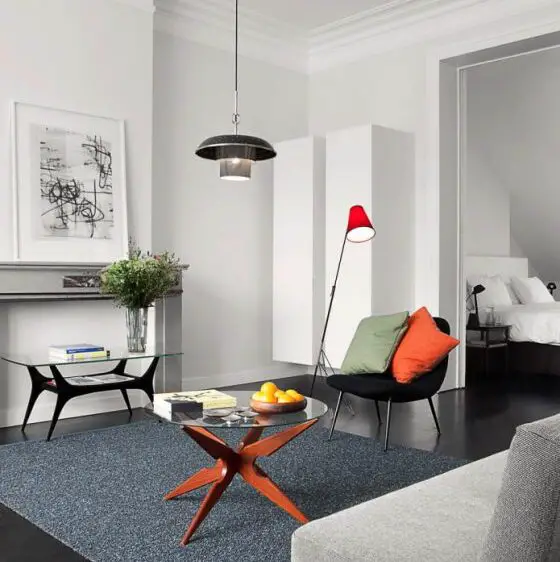
The glow temperature is more industrial and chilly. The brightness is extremely high.
The style, which recently celebrated its centennial, remains aesthetically pleasing in the eyes of connoisseurs. Its decor is not considered decor, but rather a studied geometry of space and sensibly chosen furniture. The Bauhaus style, which combines minimalism and functionality, allows for the following ornamental elements:
- Different forms of abstract painting
- The lamps have a simple design yet an ergonomic shape.
- Superior household appliances.
- Carpet — can be used as a background or as an accent in the design.
- Geometric prints on pillows, and curtains.
- Mirrors, monochrome photographs in metal frames.
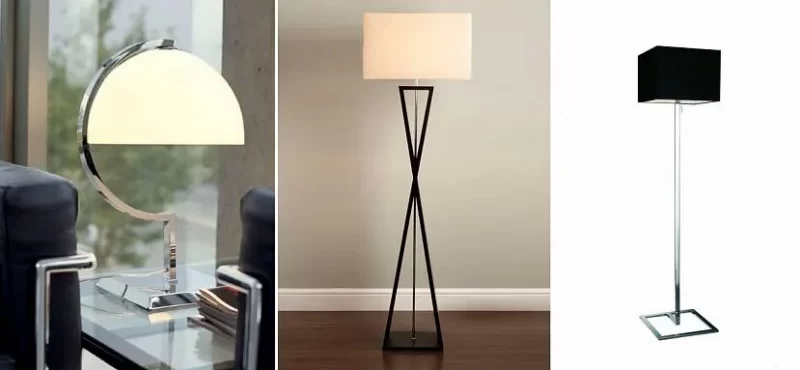
What did the Bauhaus style in architecture emphasize?
Simplicity and Minimalism: The Bauhaus style emphasized simplicity, clean lines, and minimal ornamentation. The aim was to create designs that were uncluttered and devoid of excess decoration, focusing on the essential elements of form and function.
What are the aesthetics of the Bauhaus?
The Bauhaus fights imitation, inferior craftsmanship, and artistic dilettantism. We want to create a purely organic building, boldly emanating its inner laws, free of untruths or ornamentation. Society needs a good image of itself.
What is Bauhaus and its relation with modern style?
Founded in Weimar, Germany, in 1919 by architect Walter Gropius, it attracted some of the key figures in the evolution of Modernism. At first, the Bauhaus focused on individual handmade crafts, but the school soon shifted to a more industrial focal point, merging art and technology and emphasizing mass production.
What is the Bauhaus most known for today?
Today, Bauhaus is renowned for both its unique aesthetic that inventively combines the fine arts with arts and crafts as well as its enduring influence on modern and contemporary art.
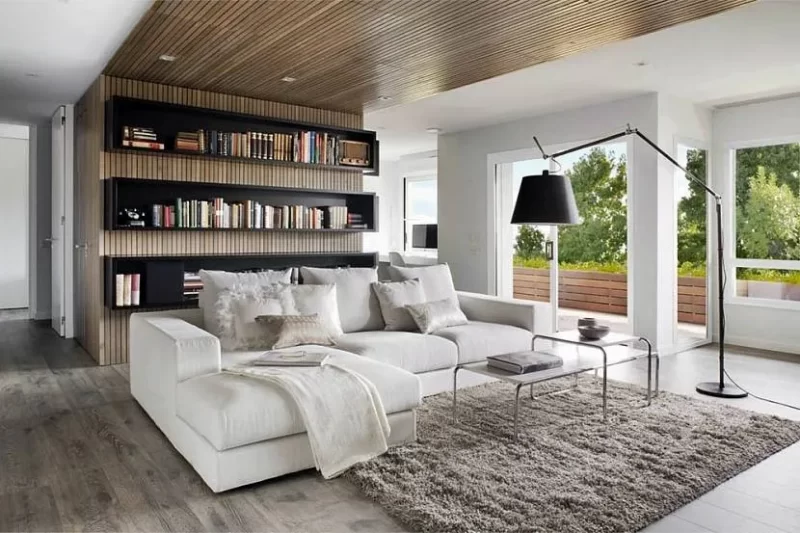
What was one of the most important principles of Bauhaus?
The Bauhaus movement’s main motto is “form follows function.” It means producing modern and sophisticated designs while focusing on the function of all elements. In Bauhaus designs, while an object’s shape should assist its function, visual components should also remain aesthetically pleasing.
What was the most famous design from Bauhaus?
Perhaps the most enduring product of the Bauhaus furniture designers, the Wassily Chair was designed by Marcel Breuer in 1925 and named after Bauhaus teacher Wassily Kandinsky. The chair is a stylish interpretation of a club chair’s skeleton made with tubular steel and leather.
Conclusion
The best Bauhaus style represents a genuine challenge to our consumer society. Its century-old life demonstrates that order is more vital than chaos and that a simple form is attractive in and of itself. However, in today’s globalized world, modifications in German design have occurred. People are increasingly infused with ideals of eclecticism, and a trinket brought from a distant trip appears on a shelf or coffee table.
https://youtu.be/ekrB1lJJwy0

I joined Appartenville in February 2021 as a content editor. After studying English literature at university, I worked as an e-commerce website editor, content author, and purchasing intern for several independent luxury and lifestyle retail companies. My role at Appartenville combines my love, experience, and passion for the world of design and the desire to create inspiring written content. As for my personal style, I am a big fan of color and drawing, especially I like the pastel color scheme. I also enjoy discovering new trends, brands, and products, whether it’s fashion, interior design, or lifestyle my wish list for buying new things is endless.
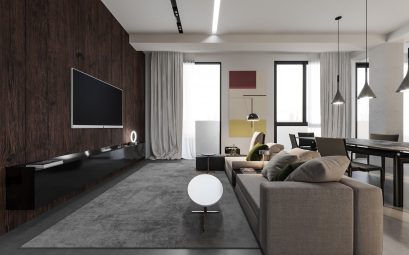
Leave a Reply